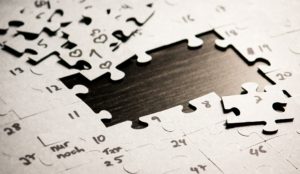786-529-6060
..
Free Consultation
What is a Chapter 13 Bankruptcy?
Under a chapter 13 bankruptcy, a debtor proposes a 3-5 year repayment plan to the creditors offering to pay off all or part of the debts from the debtor’s future income. Chapter 13 bankruptcy is generally used by debtors who want to keep secured assets, such as a home or car, when they have more equity in the secured assets than they can protect with their Florida bankruptcy exemptions. Chapter 13 bankruptcy is a reorganization whereas Chapter 7 bankruptcy is a liquidation.

Chapter 13 bankruptcy cases officially start when the bankruptcy petition is filed. Most of the time, the court will enact the automatic stay immediately after the case is filed, which prevents creditors from making any collection efforts while the bankruptcy is pending or until the bankruptcy court gives further notice.
With Chapter 13 bankruptcy, you can catch up or pay off your most significant obligations while paying a lesser amount toward nonessential debts. It starts by setting up a budget.
A corporation cannot file a Chapter 13 Bankruptcy. Corporate reorganizations are possible through a more complex process under a Chapter 11 Bankruptcy.
Bankruptcy Costs
A Chapter 13 bankruptcy process takes anywhere from three to five years to complete, costs $310.00 in filing and administrative fees (in addition to the attorneys' fees), and normally requires only one trip to the courthouse. You must also pay for and complete a credit counseling course with an agency approved by the United States Trustee, which typically costs $20.00. Other costs might be the cost of pulling your credit reports, the cost of requesting IRS Tax Return Transcripts, any Broker Value Opinion if you are looking to cram down an investment property or the Mortgage Modification Mediation fee of $300.00.
Who can File a Chapter 13
To be eligible for a Chapter 13, the debtor must:
- Have a steady source of income from which to make pre-established payments to the bankruptcy trustee to benefit creditors. Your income can come from employment, Social Security or disability benefits, a sole proprietorship, or otherwise.;
- Have adequate disposable income for these payments after covering necessary living expenses; and
- Fall between the acceptable limits established for secured and unsecured debts.
The four most common reasons that people file for Chapter 13 bankruptcy are as follows:
- You can pay something to your unsecured creditors. Many times, people can afford to pay something to their creditors, but not the full contractual amount creditors frequently require. Instead, you’ll pay what you can to the bankruptcy trustee (within legal guidelines), and the trustee will disperse the funds to the creditor.
- You have property to protect. In Chapter 7 bankruptcy, you might have to give up some of your assets. By contrast, a Chapter 13 bankruptcy allows you to keep all of your property and pay the value of your nonexempt assets (property you can’t protect with an exemption) to your creditors. Non-exempt property can be sold (liquidated) to benefit creditors in Chapter 7 bankruptcy, but Chapter 13 allows debtors to maintain ownership of their property while making scheduled payments.
- You have priority, nondischargeable debts. These are debts that won’t go away in bankruptcy, such as child support, alimony, and certain taxes. Even though you’ll pay these items in full through your bankruptcy plan, it’s often a more manageable amount than can be worked out directly with the creditor. Some tax debts cannot be discharged, but can be included in a Chapter 13 repayment plan to be paid off over time. Student loans are only dischargeable in Chapter 7 bankruptcy in very rare cases, but they can be included in Chapter 13 repayment plans.
- You are behind on mortgage or car payments. Chapter 13 allows you to catch up on payment arrearages over the life of the plan, while you continue to make your ongoing payment. Many Chapter 13 bankruptcy petitions are filed specifically to stop vehicle repossession or foreclosure, but Chapter 13 can also be used to catch up on secured debts while keeping the property that secures those debts.
Do I loose my assets if I file a Chapter 13 Bankruptcy?
Not necessarily. One of the biggest benefits of Chapter 13 is that it provides flexibility. No one expects your financial situation or the circumstances of your life to remain the same for three to five years. People change jobs, move, get married, have kids, and get sick. If this happens, a Chapter 13 plan can be modified to accommodate changes in your circumstances.
Although a Chapter 13 is a restructuring, not in every case can all the assets be saved from creditors. If you are not able to pay the monthly payment under the plan and decide to exclude an investment property from the plan, that property is not protected by the Chapter 13 Bankruptcy and therefore can be subject to foreclosure by a secured creditor.
That said, all assets that do not secure a debt, are safe from creditors.
Repayment Plan
The Chapter 13 repayment plan will usually last at least three years, but no more than five years. At the beginning of

the case, you will propose a plan to pay all the creditors that must be paid (not all creditors have to be paid through Chapter 13). Your debts are classified according to whether they are unsecured (no collateral) or secured (with collateral).
The bankruptcy code also assigns a priority to each type of debt. Debts for taxes and child support, for instance, have a higher priority than credit cards. Your monthly payment under the plan depends on many different factors, including the how much you owe in mortgage arrearages, whether you pay your car payment through the plan, how much priority debt you have, your income, and your reasonable and necessary expenses. Often, you will not have to pay back all that you owe. If you have enough income to pay back your priority debt like taxes, but not enough to pay back you credit cards, you may not have to pay those credit cards after all.
What is the Discharge?
After 3 to 5 years following the filing of your petition, all your debts that were not paid off as part of the plan are eliminated (discharged) by the court.
